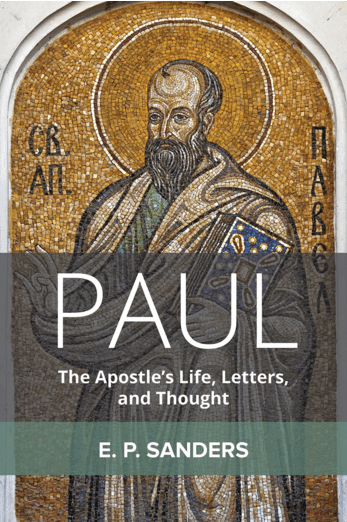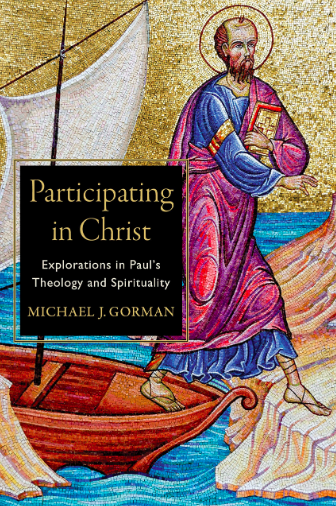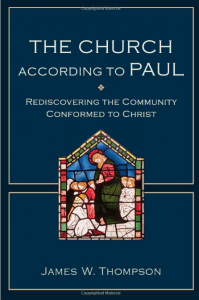 In 1977 E.P. Sanders wrote Paul and Palestinian Judaism and unleashed what, in the expression originally of N.T. Wright and then more forcefully J.D.G. Dunn, is called “the new perspective.” Sanders, however, put far more pressure on how we understand Judaism than how we understand either Jesus (he did write Jesus and Judaism) or Paul (only a small book on Paul, and a long section in P&PJ).
In 1977 E.P. Sanders wrote Paul and Palestinian Judaism and unleashed what, in the expression originally of N.T. Wright and then more forcefully J.D.G. Dunn, is called “the new perspective.” Sanders, however, put far more pressure on how we understand Judaism than how we understand either Jesus (he did write Jesus and Judaism) or Paul (only a small book on Paul, and a long section in P&PJ).
In fact, Sanders’ best book — in my estimation — other than the 1977 juggernaut is his book Judaism: Practice and Belief. There he sketched how Judaism is understood in contemporary to the NT sources, most especially Josephus. I contend this was his most important work of all since he put into print how he understood Judaism more completely than is found in P&PJ.
Dunn and Wright both followed up the work of Sanders on Judaism with strong proposals on how to understand Paul — Dunn completing his work in The Theology of Paul the Apostle (the “pumpkin book”) and NT Wright in Paul and the Faithfulness of God. These two works have formed the core of the new perspective. Those who criticize the new perspective without reading these two works carefully are offering talking points they’ve heard in the academic corridors but are not talking personal knowledge.
What we needed from Sanders was something more than the last sections of P&PJ and more than we got in his little book on Paul in the Past Masters series. I’m happy to announce we have that book now. To use the words of my father in law, it’s a “ming” (his term for something big and heavy). It’s got to be connected to the Ming dynasty but I don’t find this meaning in urban dictionaries. Anyway, E.P. Sanders now has a book called Paul: The Apostle’s Life, Letters, and Thought (Fortress, 2015). The book was pressed between our two front doors on Christmas Eve Day so it is my Christmas present.
It’s 862 pages, but the font is unusually large (nice for this reader’s eyes) and there’s plenty of white space and, even more, Sanders has great prose — he is crystal clear. He doesn’t care about the old perspective, new perspective and apocalyptic Paul debate. He simply lays out what he thinks Paul means in all his (authentic) letters, paragraph by paragraph. Which is, as the title of his post suggests, the completion of the new perspective on Judaism by forging an interpretation of Paul.
After about a 150 page introduction (worth every minute of reading), we get “commentaries” on Paul’s theology in each letter Sanders thinks Paul wrote: 1 Thess, 1-2 Corinthians, Galatians, Philippians and Romans. Plus Philemon.
Classic Sanders, classic new perspective, classic foundation for re-reading Paul:
In addition to the general charge that studying how to obey the commandments of the Hebrew Bible made the Pharisees focus on trivia, the Protestant critics of ancient Judaism have accused ancient Jews in general and Pharisees in particular of holding the view that they could achieve salvation by these trivial acts of obedience to the law and by piling up “good deeds” or “good works.”
This supposed soteriology (doctrine of salvation) is usually termed “self-righteousness,” “works-righteousness,” “legalism,” or simply ‘self-salvation.” The supposed Pharisaic dogma is totally opposed to relying on the grace of God; all depends on each individual’s performance.
I have two preliminary remarks, both of which have to do with the unusual nature of Christianity compared to other religions. The first concerns “dogma.” Over the centuries, Christianity became a religion that required its members to believe (or to say that they believed) a list of propositional truths—dogmas. In religious services they recited creeds, lists of dogmas. This conception of Christianity soon produced the possibility of heresy—believing things that were not on the approved list. Deliberately and publically [sic] disagreeing with items on the list could be fatal.
Many modern scholars of Christianity have come from dogmatic backgrounds, and they have thought it natural for a religion to have numerous dogmas. When they considered Judaism, they looked for dogmas, and many years ago they came up with the soteriological dogma that I described above (self-salvation). …
The second historical peculiarity of Christianity is that it began as a religion of individual salvation; and, although it has now taken on many cultural and social forms, individual salvation—eternal life in a state of bliss—remains a central concern.
The history of the Israelite and Jewish religion is quite different. The Hebrew Bible has very little to say about an afterlife and even less to say about the requirements that individuals must satisfy in order to be saved. Judaism’s main concern has long been the preservation of the people as a group, not individual salvation, and in the main bodies of literature there are no dogmas about what individuals should believe in order to have eternal life. …
It is this: Jews are born in the covenant and are members of the chosen people. In order to gain eternal life (“the world to come,” olam haba), they should obey the commandments as best they could and atone for transgression. That is, they are born into the “in group’ and all they have to do is to remain loyal to the covenant and to the God who gave it. Supererogatory efforts are not required. …
Thus Paul shared the general Jewish view: members of the “in group” will be saved, though God may punish them before or at the time of the judgment.
The difference between Paul and common Judaism on this point is that in Judaism people are born into the covenant and do not need any sort of transformation. They start out in the “in group” and need only to stay in by not rejecting the covenant. In Paul’s view (and that of many other Christians), everyone starts life in need of salvation. They must all do something—convttt, put their faith in Christ—in order to get into the group that will be saved. Once they are in the new covenant, however, the system of rewards and punishments works in the same way as in Judaism. (42-48)
Sanders has a bit of a bug in his bonnet when it comes to denying there is evidence that Paul was an actual Pharisee. The Paul of Acts is one, but Sanders thinks we have to go on the basis of Paul’s letters, and this is how he sums up his discussion:
Paul knew enough about Pharisaism to identify himself as a Pharisee, but I do not see anything in his letters that points toward his knowledge of exclusively Pharisaic views or practices.
Belief in the resurrection might have been enough for Paul to call himself a Pharisee “as to the law,” because it seems to have been a very prominent issue in Palestinian Pharisaism, even though it was not unique to the Pharisees. Acts 23:6 explicitly points in that direction.
Although many people combined fate and freewill, it is possible that Paul regarded this as one of his Pharisaic characteristics.
Similarly, it is conceivable that he regarded his expertise in knowing and interpreting the Bible as Pharisaic. Even though Pharisees were by no means the only experts, they were renowned for their “precision” in understanding the biblical text.
Since there are no traces of uniquely Pharisaic ideas and practices in Paul’s letters, readers may remain agnostic on the question of whether or not Paul received a Pharisaic education. Scholars who find Pharisaic positions in Paul’s letters, or the denial of them, are, in every case that I have noted, making the mistake of assuming that the Pharisees were the only Jews who had legal positions or the only ones who had purity practices.
We noted, however, one point that counts against Paul’s being a Palestinian Pharisee: he seems not to have been highly educated in how to make general principles or vague laws in the Bible apply precisely to everyday life, which was an important point of Pharisaism. (54)















